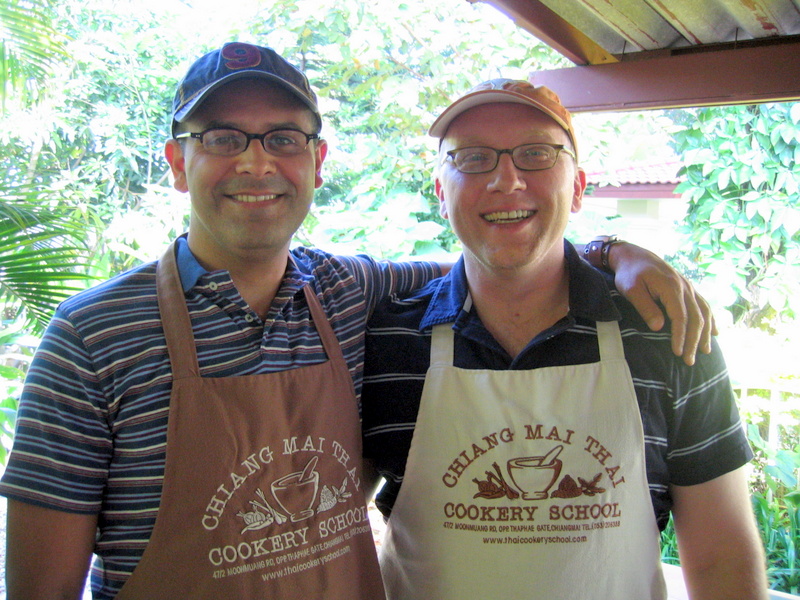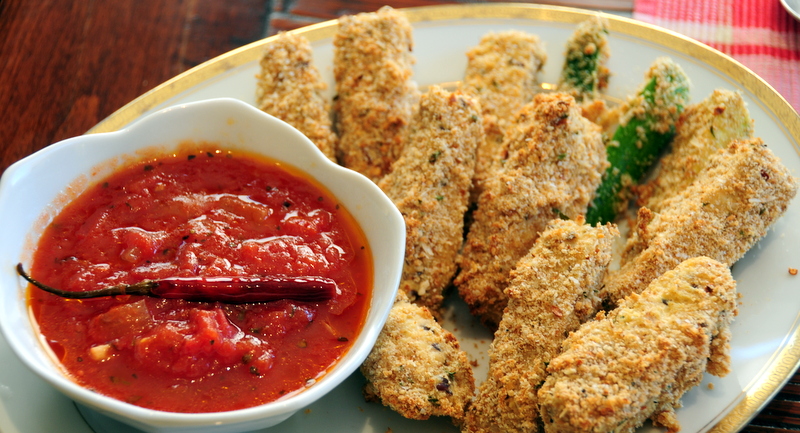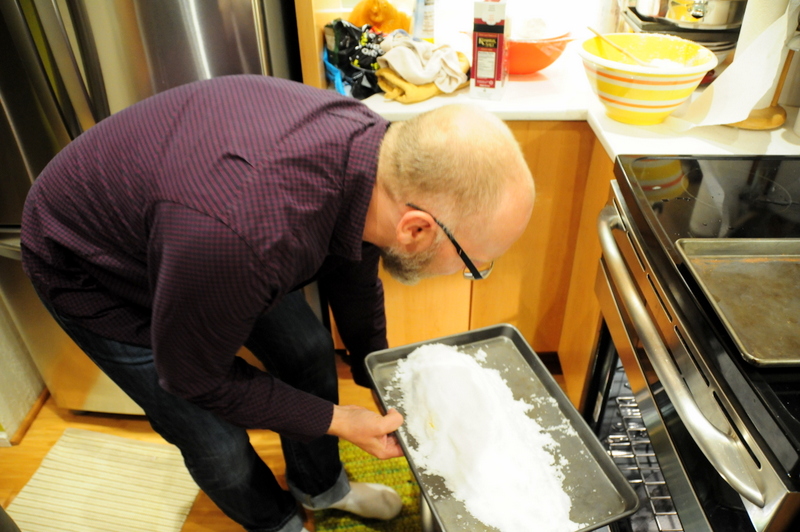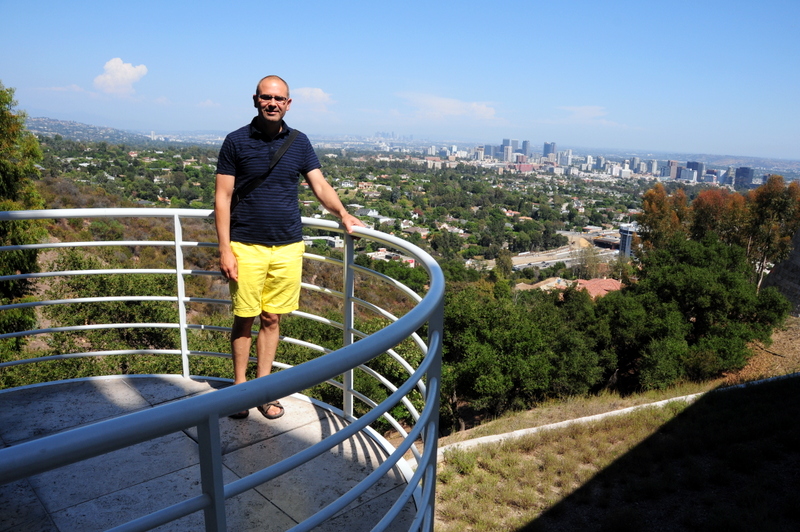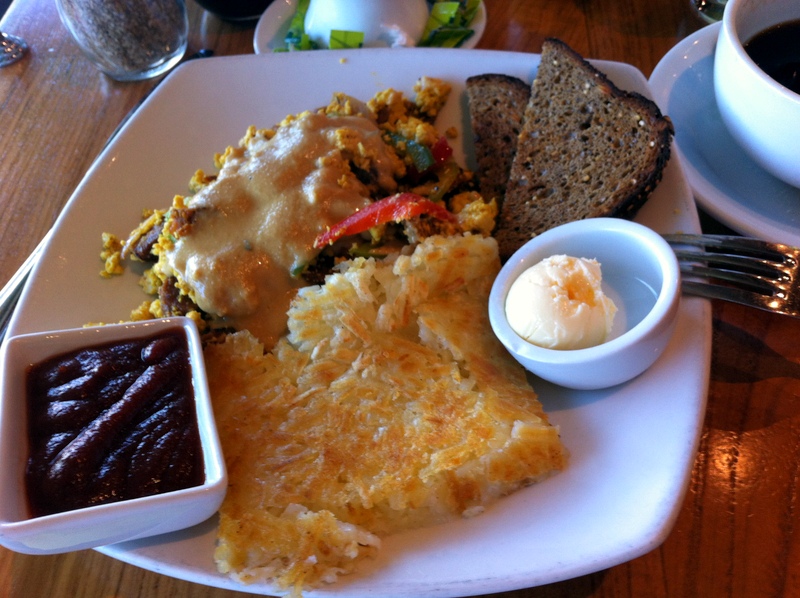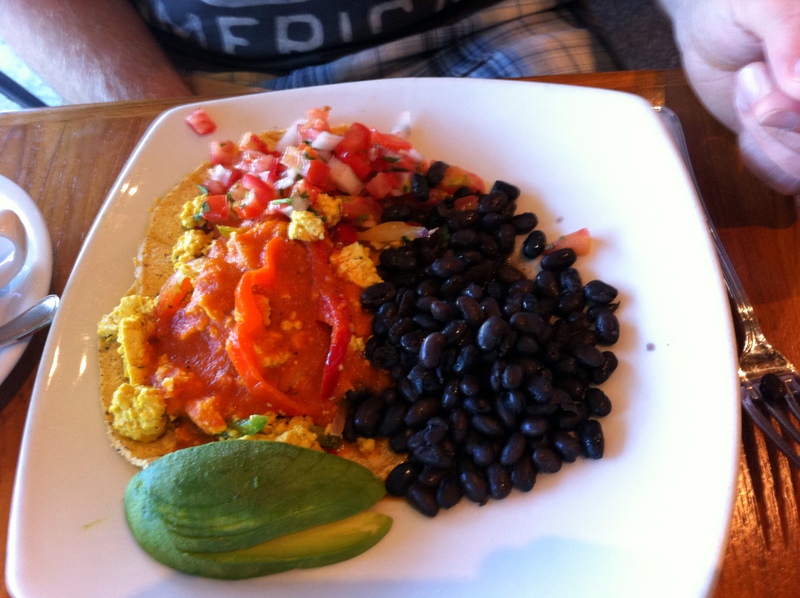I’ve wanted to tour Quixote ever since I saw a pic of their gorgeous and eccentric winemaking facility in Wine Spectator about a year or so ago. The place is incredible looking, isn’t it?

close up of one of Quixote's exterior walls

Claudio and me at Quixote

see Quixote’s golden dome peeking over the lush grassy garden?
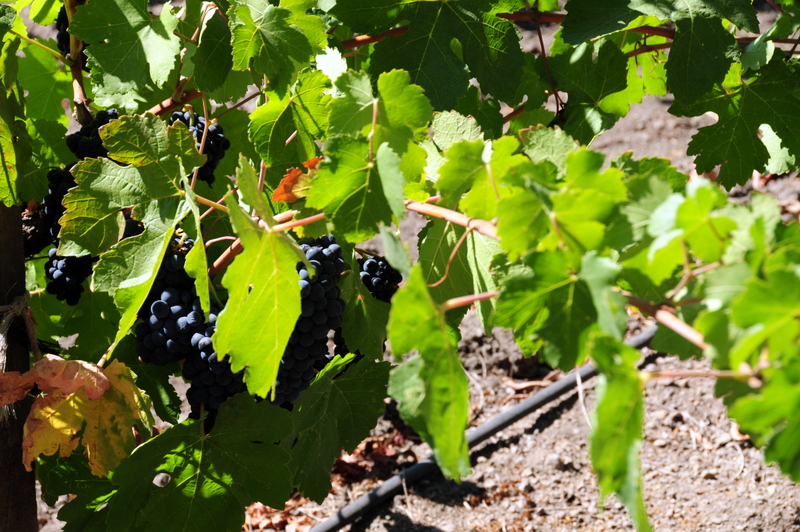
harvest was just starting during our visit to Quixote so we got to see the ripe grapes hanging on the vine

every detail was considered for the design, including the floor tiles
Designed by the Viennese architect, Friedensreich Hundertwasser, we learned on the delightful tour that this is the only building created be this colorful artist who didn’t believe in “straight lines.” Sadly he died shortly after the completion of the project, so never got to truly enjoy the fruits of his labor.
Not so with us.
They pronounce Quixote the Spanish way, rather than the American (“kwix-it”) or Portuguese (“qui-sho-tee.”) You must have a reservation for the tour and tasting. They’re very small, so it makes sense to call ahead. The entrance is past Shafer on a lovely country road that is extremely easy to miss from Silverado Trail. A map is essential.
We were thrilled when we got to the winery entrance and began to see the copper colored dome rising from the gently sloping hills. Our tour guide: was his name René or perhaps Andre? I believe he said that he was Swiss. I’ve misplaced my notes by now and Hegui and I couldn’t quite recall. Let’s call him Mr. X here. Or perhaps, for simplicity, merely X. Well, X was affable and very chatty. He regaled us with a long and charming (I almost wrote “colorful” again. This place really brings out that adjective) history of wine and grape cultivation from the most ancient times to the present in California.
X had lots of stimulating ideas regarding the lesser importance of the ancient Romans in the development of Burgundy (it was the Phoenicians who brought the grape that became pinot noir), was delighted with obscure genetic facts linking zinfandel to the Italian primitivo and an obscure grape from Eastern Europe (I also forgot that name), and how Americans simply drink wine wrong. Yeah, I know, we’re Americans on a tour of an American winery yet some European guy is telling us we don’t know how to truly appreciate wine. Not good for sales, but what a provocative conversation!

statuettes of Don Quixote and sidekick, Panza

tasting some Quixote cabernet with Mr X

beautiful Quixote garden patio
X’s idea was the old saw that “wine should be drunk with food” with his added complaint that we frequently drink it on its own in place of cocktails, aperitifs and digestifs. Thus we’re particularly fond of powerful fruity wines and have no sense of the subtleties. He completely dismissed pinot noir from the Russian River Valley with “who wants to drink raspberries and strawberries all the time?” Afterward Hegui and I talked about these interrelated ideas for over several days. It is true that American wines can be fruity and bold. But what’s the problem with that really?
It seems so natural to take a defensive posture against this Euro-superior view but I’ve decided that’s the wrong approach. It’s X’s basic assumptions about wine that I challenge. Is this a beverage that has a particular scripted role for all time or, as in my view, is it in fact a drink to enjoy in a variety of ways? For example, it can be had with food or alone, be bold or subtle, fruity or well, what’s the opposite for fruity in wine anyway, and why would you seek out such a wine? I reject the uptight traditionalist chauvinism in favor of a more liberal interpretation. X is charming but misguided to my way of thinking.
Anyway, enough politics!
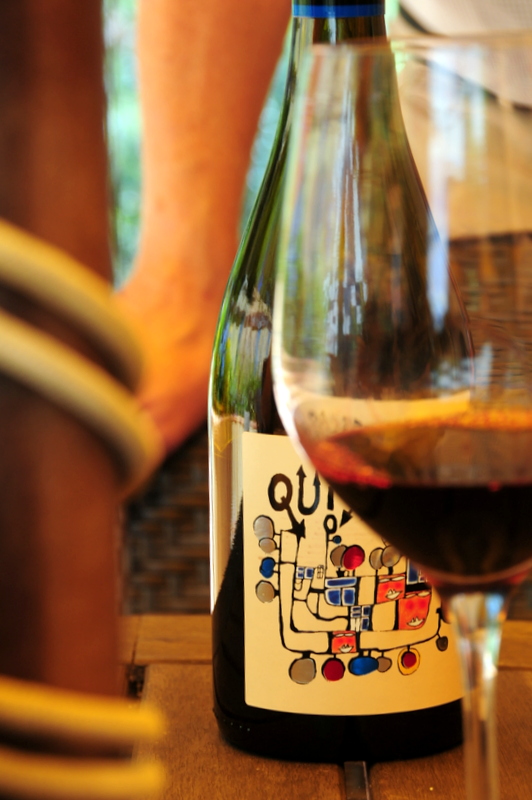
some Quixote petite sirah
We tried cabernet sauvignon and petite sirah. Strangely, as this is the Stags Leap District of Napa Valley, Quixote’s focus is on the later varietal. Unfortunately I misplaced my notes by the time I was ready to write my story, so I can’t be very specific. The cab tasted alright if a bit thin. Both the petite sirah vintages were powerful and rich with ample fruit, full body, with lovely spice and earthy notes. The older one, as X suggested, is more tamed (though I’m doubtful how much better it would “go with food” compared to the more recent vintage). After the tour we sat on a lovely garden patio behind the winery sipping and snacking on elegant cheeses and crackers.
A visit to Quixote will stimulate your intellect as well as all of your senses.

a perfect day in Napa Valley












